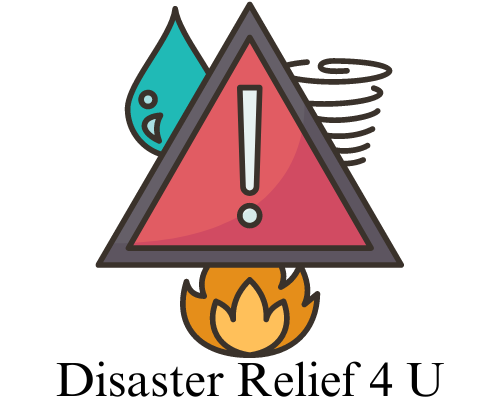Have you ever wondered how meteorologists effectively communicate the risks associated with hurricanes? In this article, we will delve into the importance of accurate and timely messaging to help communities prepare and stay safe during hurricane events.
The Power of Visuals in Hurricane Risk Messaging
When it comes to communicating weather-related hazards like hurricanes, visuals can play a crucial role in enhancing public understanding and response. Images have the ability to convey complex information in a clear and impactful way, making them an essential tool for meteorologists and emergency management agencies.
Utilizing Social Media for Effective Messaging
In a study conducted by the NSF NCAR, researchers analyzed Twitter data related to hurricanes Harvey and Irma in 2017 to understand how social media can be used for risk communication. The findings highlighted the significance of using images to convey important information about storm development and potential impacts.
Importance of Early Storm Development Forecasts
The research emphasized the importance of early storm development forecasts in shaping public reactions and preparedness efforts. By providing timely updates on the progress of hurricanes, meteorologists can help individuals and communities make informed decisions about evacuation, sheltering, and other safety measures.

This image is property of scx2.b-cdn.net.
Engaging At-Risk Community Members
Effective hurricane risk messaging involves more than just providing information—it also requires engaging with at-risk community members to ensure they understand the potential dangers and take appropriate actions to protect themselves and their loved ones.
Strategies for Engaging with the Community
Authorities and emergency management agencies can use various strategies to engage with at-risk community members, such as:
- Hosting town hall meetings or community workshops
- Distributing informational materials in multiple languages
- Collaborating with local organizations and leaders to reach underserved populations
By actively involving the community in the communication process, authorities can build trust, encourage preparedness, and increase overall resilience to hurricane events.
Cone of Uncertainty Image: A Popular Tool for Communication
One of the most widely recognized graphics used in hurricane risk messaging is the cone of uncertainty, which shows the projected path of a storm and the potential areas of impact. According to the study, this image was the most retweeted graphic during hurricanes Harvey and Irma.
Improvement in Uncertainty Visualizations
While the cone of uncertainty is a valuable tool for visualizing the potential track of a hurricane, there is still room for improvement in uncertainty visualizations. Researchers recommend enhancing the clarity and accuracy of these graphics to help the public better understand the risks associated with hurricanes.

This image is property of hazards.colorado.edu.
The Role of Social Media in Hurricane Communication
In today’s digital age, social media platforms have become essential tools for disseminating information during hurricane events. From providing real-time updates to sharing important safety tips, social media plays a crucial role in keeping the public informed and prepared.
Utilizing Social Media Platforms
Meteorologists, emergency management agencies, and other authoritative sources can leverage social media platforms like Twitter, Facebook, and Instagram to communicate hurricane-related information. By posting updates, sharing graphics, and engaging with followers, they can reach a wider audience and encourage proactive actions.
National Weather Service: Leading Communication Efforts
During hurricane events, the National Weather Service (NWS) plays a key role in leading communication efforts and providing authoritative information to the public. With its team of meteorologists and experts, the NWS delivers timely updates on storm development, watches, and warnings to help individuals and communities stay safe.
Tailoring Communication Strategies
Effective hurricane risk messaging requires tailoring communication strategies based on the specific risks associated with each storm. Whether it’s a Category 5 hurricane or a tropical storm, authorities need to provide accurate and relevant information to help individuals make informed decisions about their safety and well-being.

This image is property of news.ucar.edu.
Recommendations for Improving Hurricane Communication
While significant progress has been made in hurricane risk messaging, there are still areas for improvement when it comes to communicating watch and warning information on social media. Further research and collaboration are needed to enhance the effectiveness of communication strategies during hurricane events.
Research on Watch and Warning Information
Researchers recommend conducting further studies on how watch and warning information is communicated on social media to identify best practices and areas for improvement. By understanding how these messages are perceived and shared, authorities can develop more effective strategies for reaching at-risk populations.
Collaboration and Innovation
Improving hurricane communication requires collaboration among meteorologists, emergency management agencies, social media platforms, and community organizations. By working together and embracing new technologies, authorities can enhance their communication efforts and better prepare communities for future hurricane events.
In conclusion, effective hurricane risk messaging is essential for helping individuals and communities prepare, respond, and recover from the impacts of these powerful storms. By using visuals, engaging with at-risk community members, leveraging social media, and continuously improving communication strategies, authorities can enhance public understanding and increase overall resilience to hurricane events. Let’s continue to work together to ensure that everyone stays safe and informed during hurricane season.

This image is property of journals.ametsoc.org.
